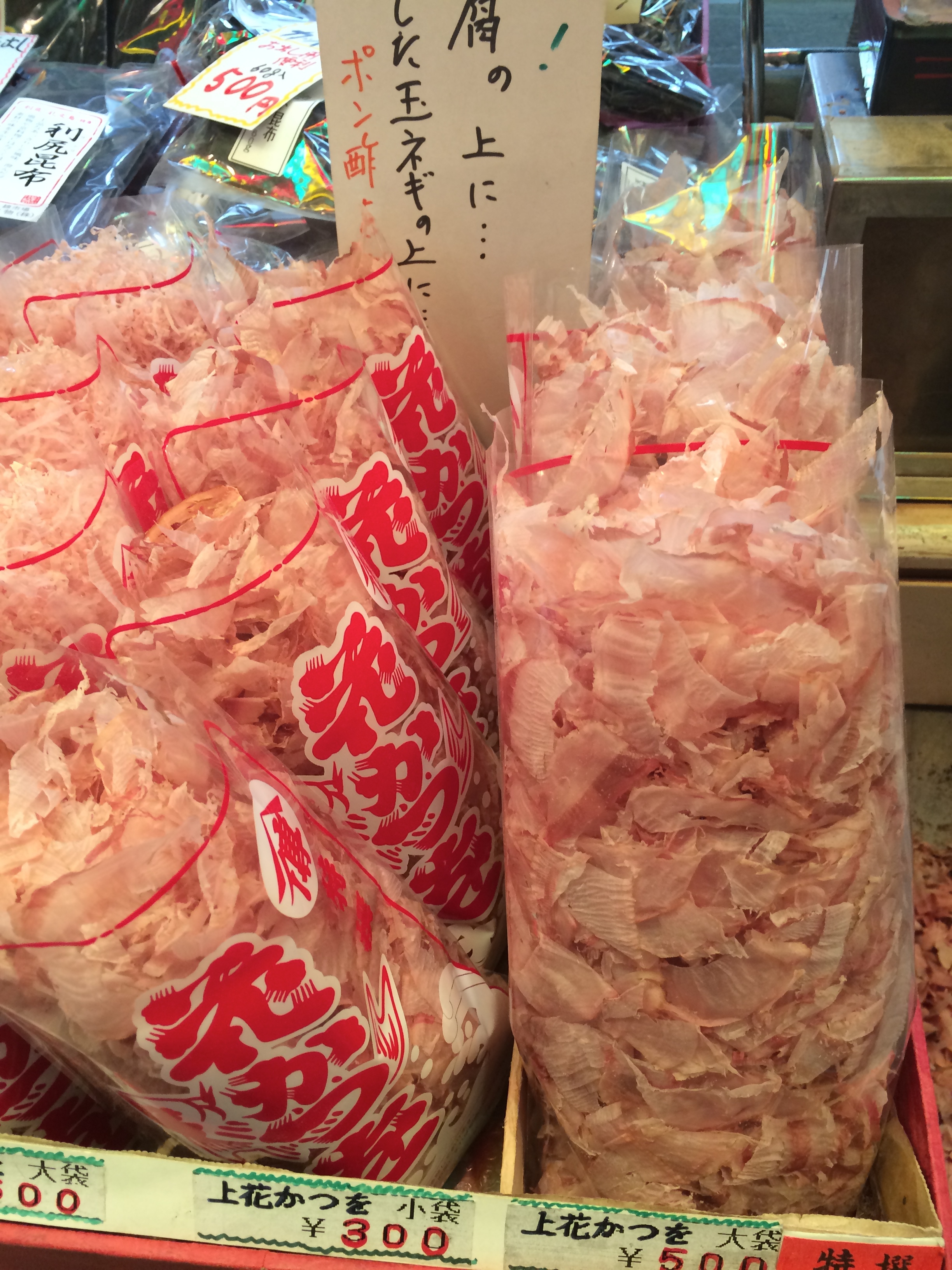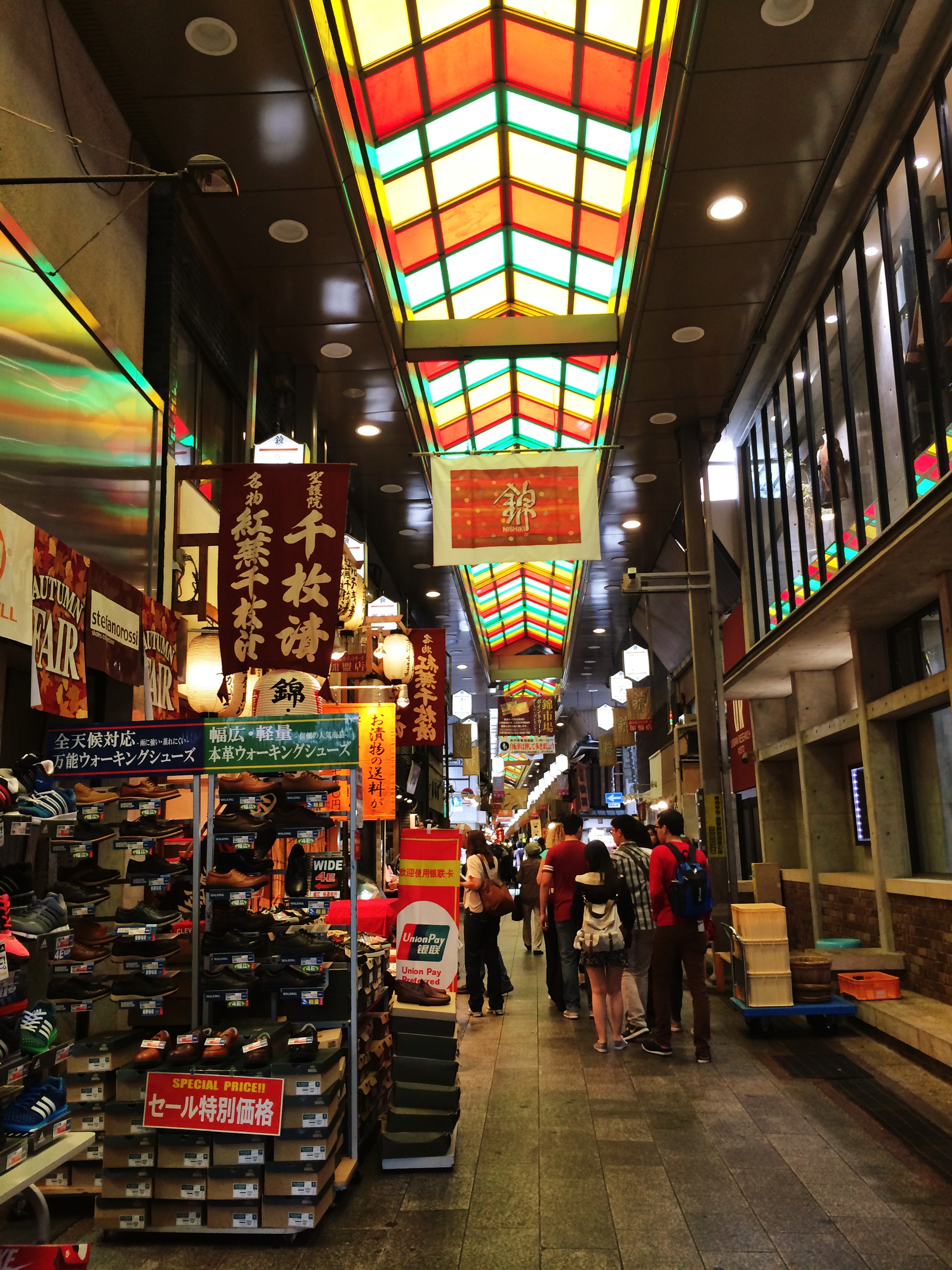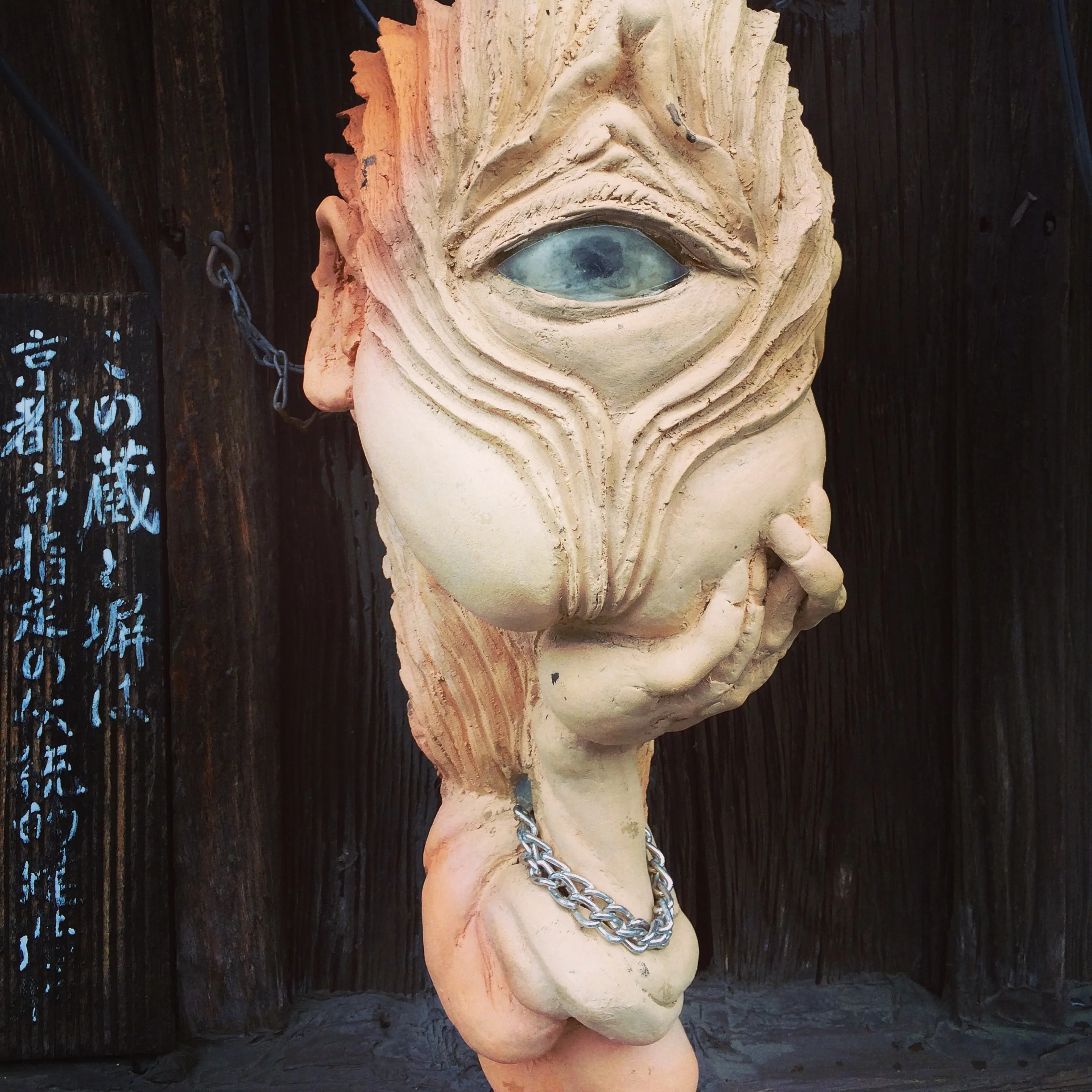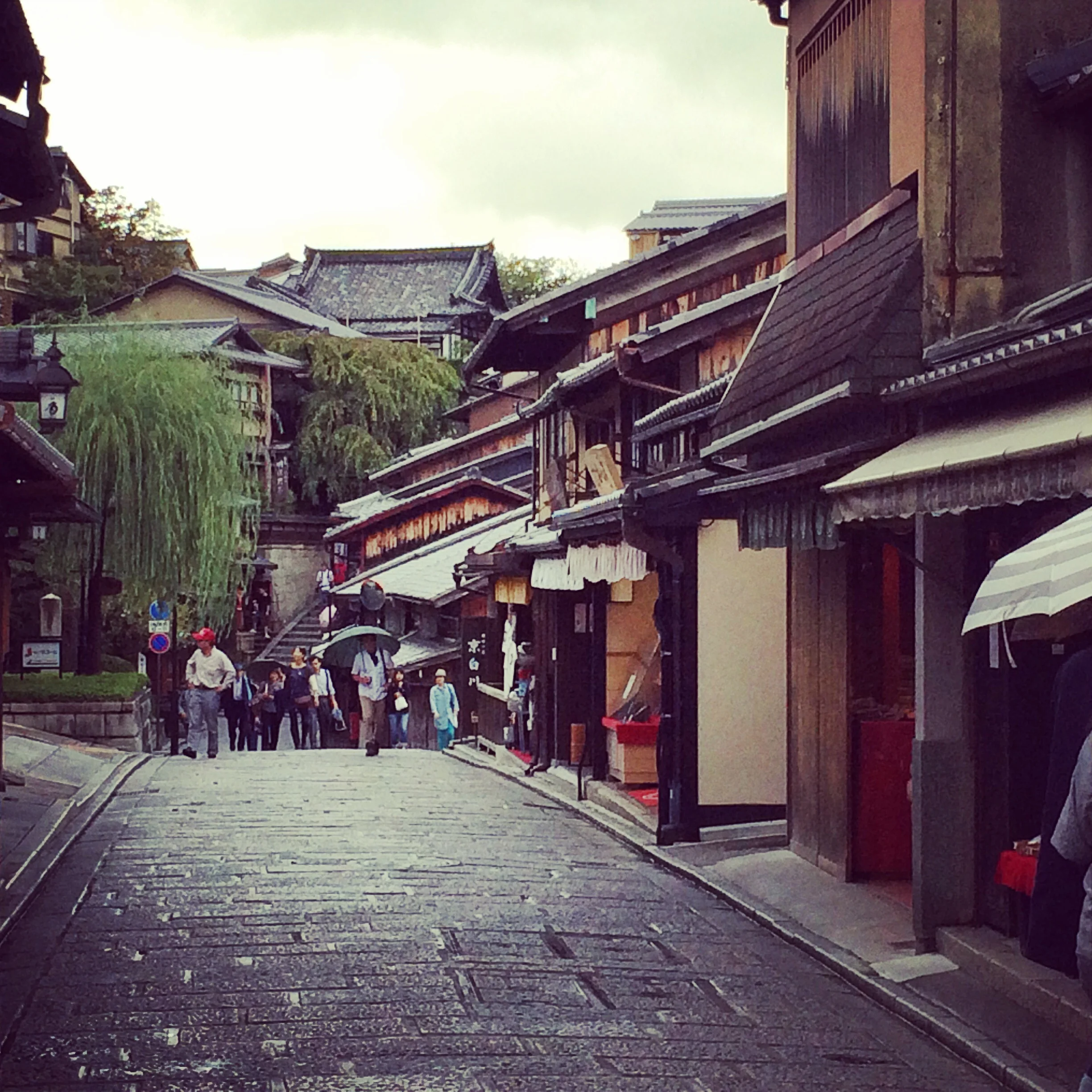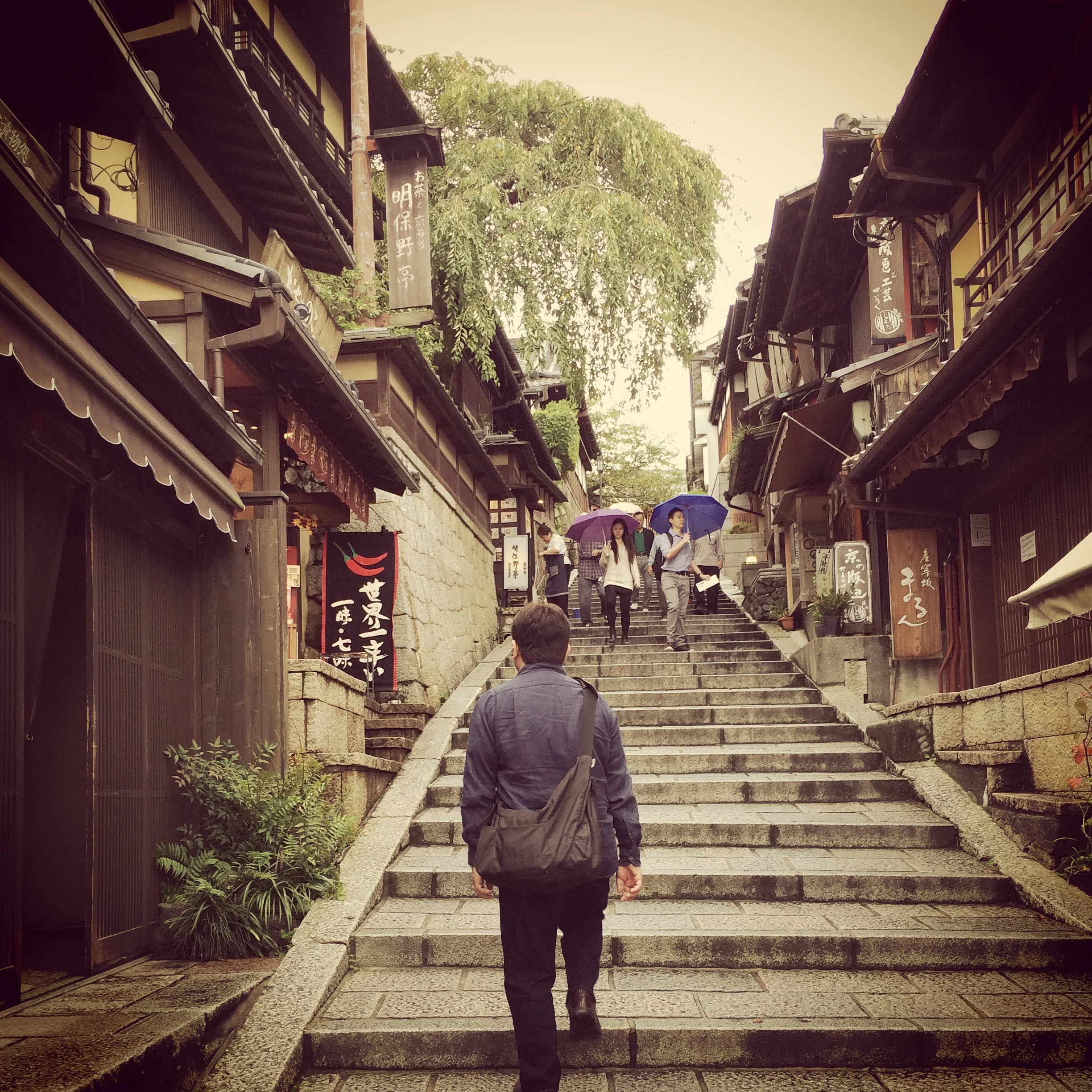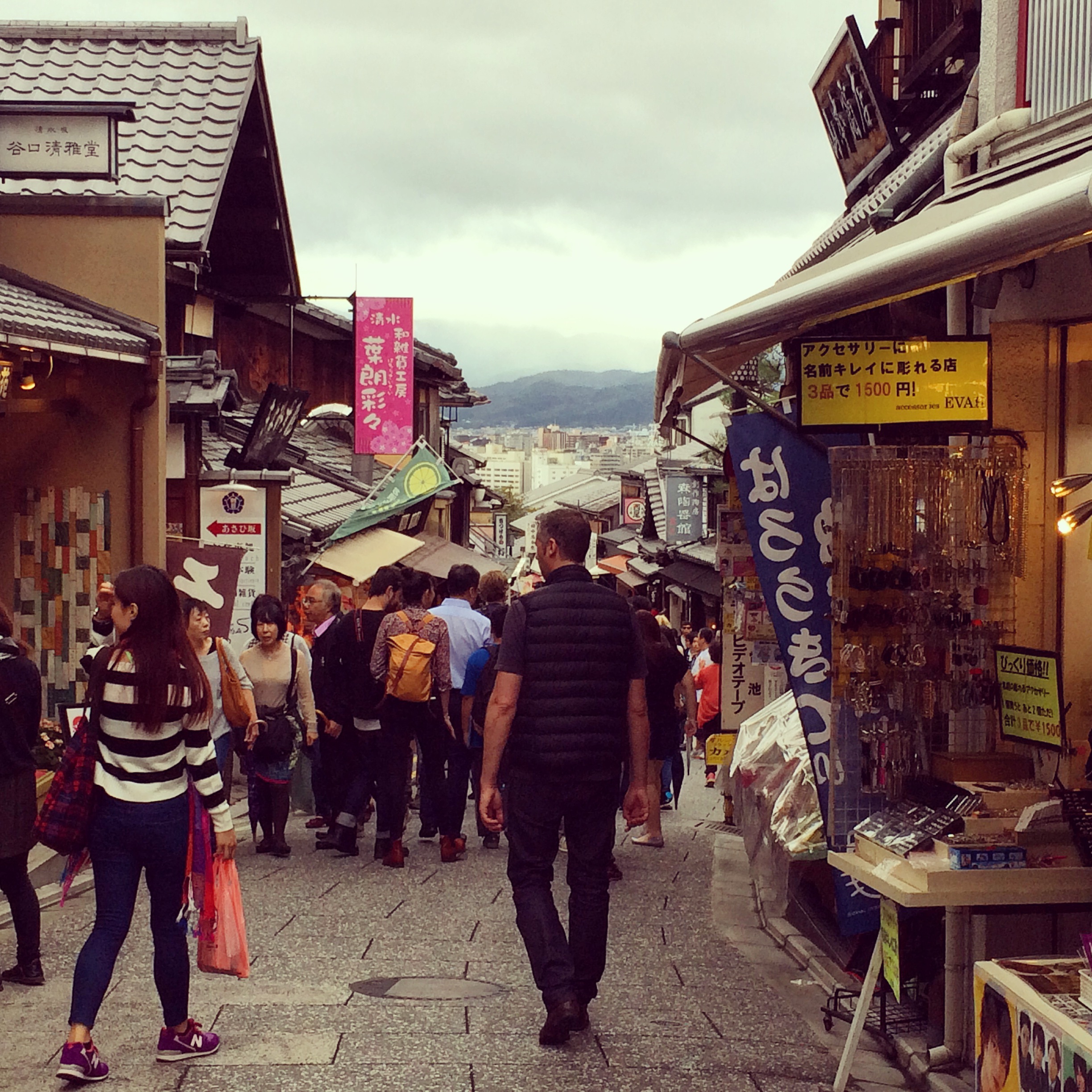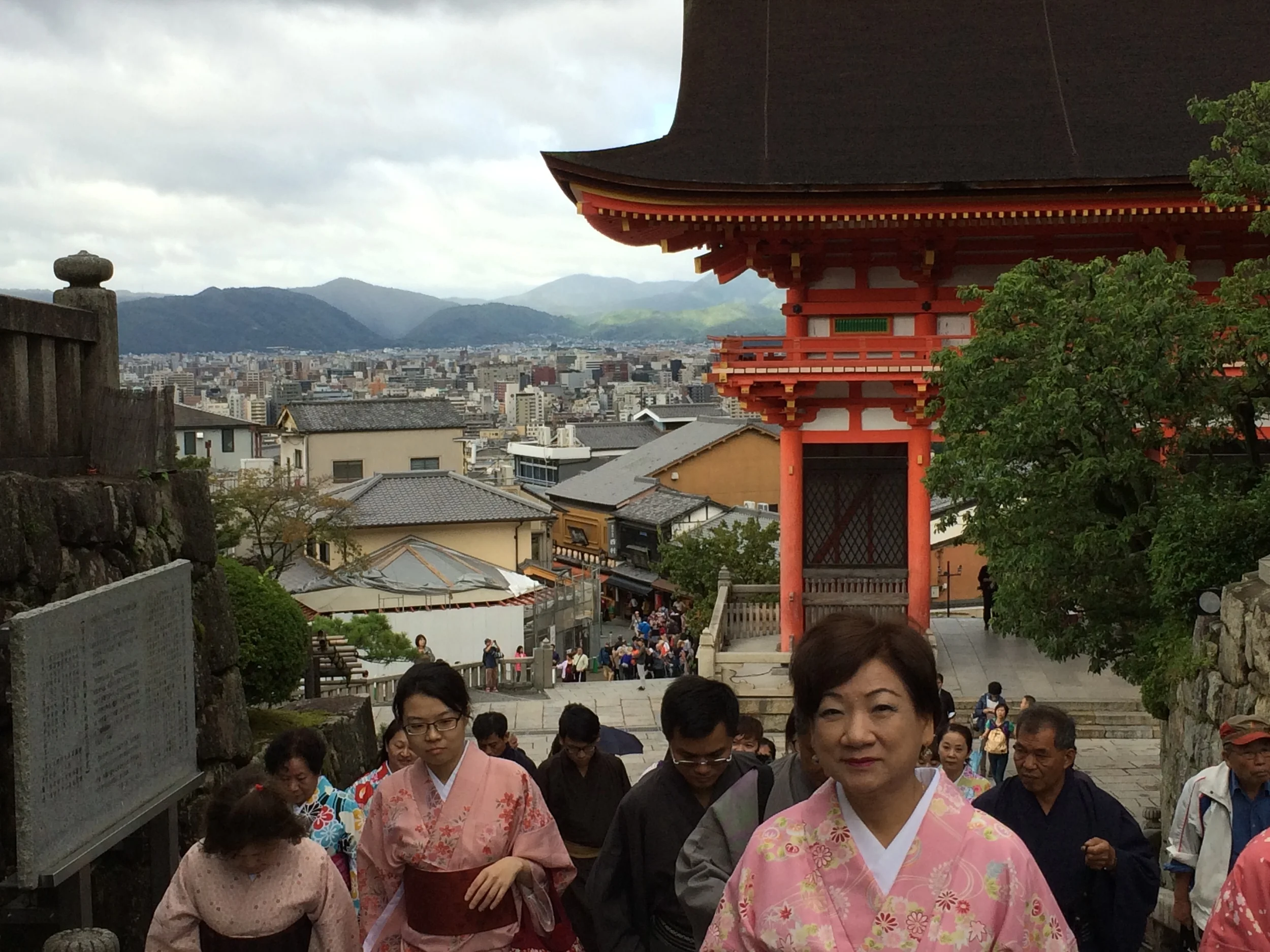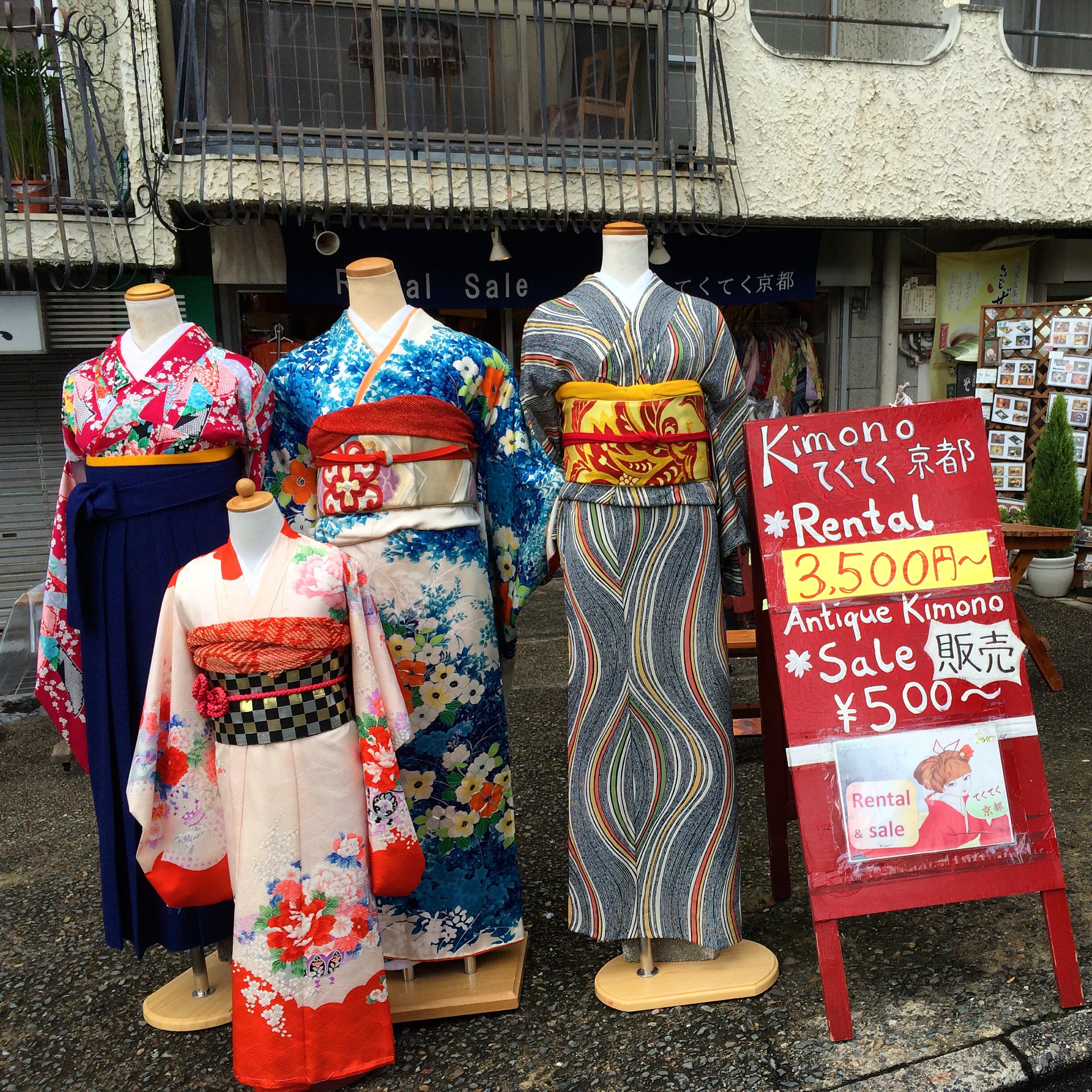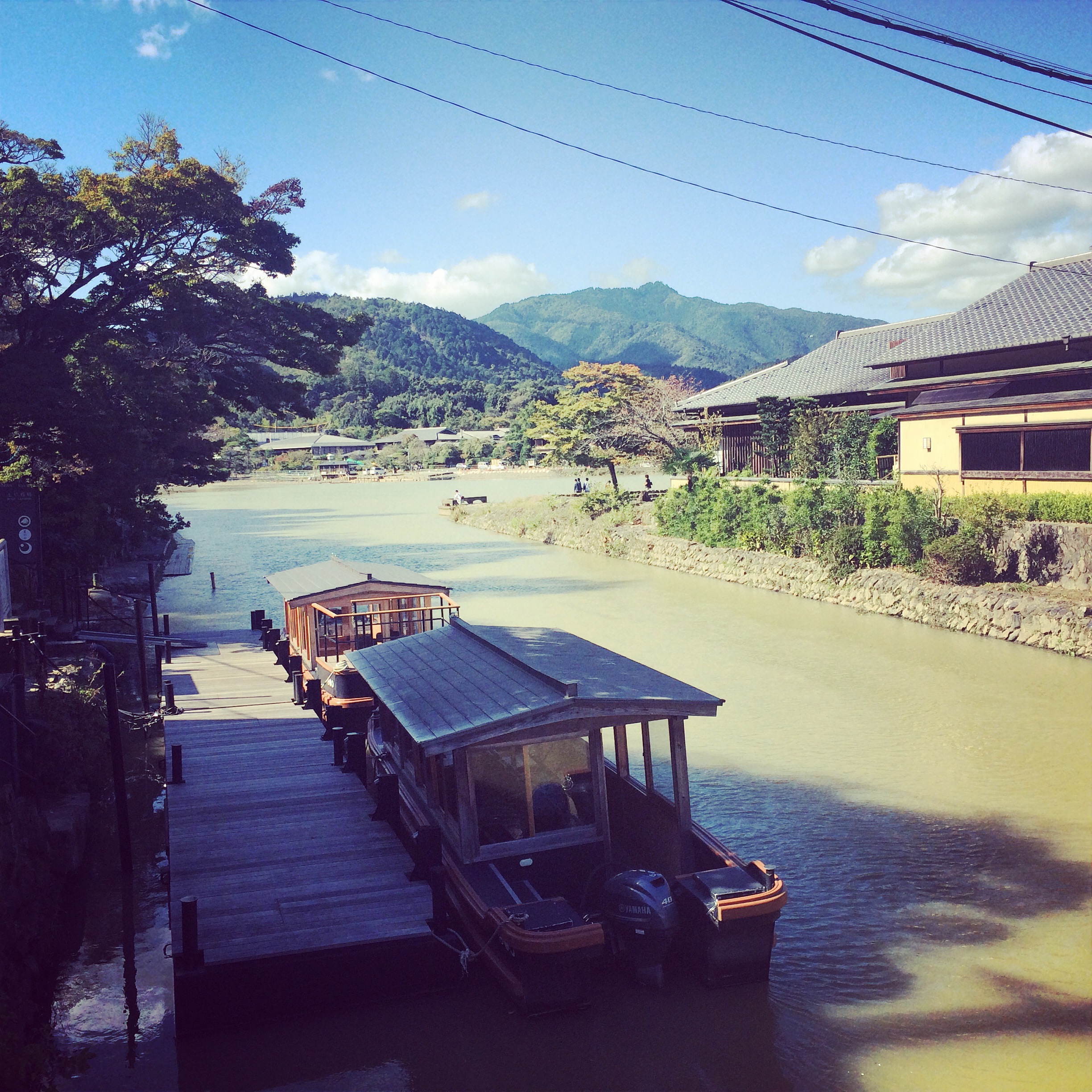Oh, Kyoto!
/Kiyomizudera (Pure Water Temple)
Kyoto is staggeringly beautiful. Seriously, there were moments when I wanted to sit in the middle of the street and cry for all the wasted time I have spent not being in Kyoto. It hits all the buttons for me. By that, I mean, it has nature, it has stunning architecture, and the differences it had with other cities in the west I have seen were so interesting. It sits nestled in a valley surrounded by mountains and hills dotted with glorious temples and swathed in lush green forests. Please, when I die, send at least some of my ashes to Kyoto.
It was once the capital city of Japan and its historical significance draws foreign and Japanese tourism alike. When visiting, it is chilling to realize the city could have suffered annihilation at the hands of the Americans during WWII. Kyoto was considered as a drop point for the atomic bomb at the end of the war.
Unlike other areas of Japan, because Kyoto was largely spared from the aerial bombing of the war, it is an excellent city to view pre-war Japanese architecture, though there are plenty of modern structures as well. It is especially known for the 2000 or so temples and shrines scattered about the city.
There is plenty to do (and plenty to eat!) so take some time to do some research and decide what is most important to you. The city is also sprawling, so taking some time to get to know the transit systems is a must.
My dear friend Skye spent two years teaching in Kyoto so we were lucky enough to have personalized recommendations. She once told me that she misses Japan like an old friend. After only a week, I knew what she meant.
From Hakone, we took one of Japan's high speed trains, a Shinkansen, to Kyoto. We first booked an Airbnb but we had to leave for reasons I won't get into and booked ourselves into a local hotel near Shijo station, Hotel Mystays Kyoto Shijo . Again, I was impressed by the level of amenities the hotel had to offer for the price of about $90/night. The room was spacious and modern. The area is most impressive, full of bars, restaurants, and interesting streets. But the jewel of the neighborhood is the incredible food market steps from our hotel.
We decided to focus on visiting the temples Skye recommended, a neighborhood to the west called Arashiyama, the food markets and shops of our home-base, Gion and see the Imperial Palace. It was a tight 3 days, but I am very happy with our choices!
The people in Kyoto are just as friendly as I had discovered the people of Tokyo to be and many of them spoke English so it's not too difficult for English-speaking tourists to get around here.
Nishiki Market
Nishiki Market is a long, colorful corridor filled mostly with food stalls but you will also find cheap clothes, cosmetics and teas here too. There are both prepared food stalls and stalls dedicated to fish, dried mushrooms, spices and powders, and produce. We spent hours there looking (and trying) the wild looking treats on offer.
A lot of the fish comes from Kyoto's local rivers and lakes and, unlike in the Tsukiji fish market in Tokyo, here they are preserved in various ways including drying, smoking, and curing. These fish on a stick were smoked, crispy and a little sweet. I also came home with dried kombu and bonito flakes which you can buy in various sized bags. These ingredients later went into the best homemade miso soup!
Honke Owariya
I must say, thankfully, it was so easy to find gluten free food in Japan. I had basically stuffed my face every place we had been so far and I hadn't felt bad. I had read about a famous restaurant in Kyoto known for the soba noodles they make fresh in-house as they have been for hundreds of years. It had been cold and rainy since we arrived in Kyoto, so a nice hot noodle soup sounded perfect.
Buckwheat is one of my all-time favorite naturally gluten-free ingredients. Going to a place dedicated to noodles made out of this delicious ingredient and I can eat as much of it as I want without getting sick? Sign me up. Honke Owariya has been in operation since 1465, first as a confection shop then in its current form, as a noodle house. It's also housed in a beautiful wooden and bamboo building off the main road so it feels like a little hidden gem.Check out their website too - it's stunning. I had the Tomago Toji, egg with soba noodles in a delicious, mild broth. Their lovely tempura platter was obviously off limits for me but I did try the gorgeous fried soba, tied into a waving bunch of what looked like coral, which was absolutely delicious and nutty. I've even tried to recreate it for some of my own dishes. Everything came out beautifully presented and packaged.
We left with two spice blends popular in Kyoto and found on practically every restaurant table in the city: Shichimi Togarashi, a chili blend and Sancho which is milder, kind of peppery and citrusy.
In the evening we took a walk along the Kamo river and then headed to Gion, a popular district in Kyoto known for the Geisha or Geiko that work in the tea-houses here.
Above street level, this area is also known for it's tiny bars that often entertain only one group at a time. We took a tiny elevator to a friendly little bar operated by a single bartender and were encouraged to choose our own music from the collection of CDs while we had a drink before dinner.
After dinner, which I gloss over because it wasn’t terribly memorable, we wandered around Shijo street looking for something to do but, while the area was touted as being a popular nightlife spot, we couldn't find much. We stopped into a whiskey bar that projected silent movies on a white wall for a drink. The rest of the night was spent wandering! But that's something I loved about Japan. Wandering around was just as entertaining as finding some perfect spot. There is so much to see and take in.
But what I realize now, writing this blog, is that I MUST WRITE EVERYTHING DOWN! I am kind of pumped about how much I can still remember but disappointed that I am now filling this white space with how much I have forgotten the exact names of things in Kyoto. Moving on...
Temples
Hokan-ji Buddhist Temple
The next day we dedicated to visiting the temples of Kyoto. We had our recommendations from Skye and set out to see as many as we could in one day - which turned out to be 3. I would suggest that if you plan to spend time in any of these temples and to explore the very different areas where they reside, don't try to do more than 2-3 in a day. The 3 we visited were rather spread out and we enjoyed the neighborhoods themselves so much we were completely wiped out by the end of the day.
We decided to start with Hokan-ji Temple on our way to Kiyomizu-dera. We opted to take a bus from our hotel, which I'm surprised to say wasn't too complicated and I was so happy with where it dropped us. As we climbed up beautiful Yasaka-dori, we passed Arabica Coffee, a sweet little coffee shop selling gourmet coffee that I needed in the worst way possible. Following the road past the first temple, it snakes uphill until eventually it dead ends just beneath Kiyomizu-dera where you can take a left just a few steps from the entrance. I would highly recommend this way and to take the most popular route up, Shimizu New Way Chawan-Zaka, down the hill after the temple. There was amazing art to see along fences, pedestrian paths up wooden stairways all under glorious Japanese architecture and towering trees.
To get to Kiyomizu-dera temple, the easiest route would be to take the train and get off at Kiyomizu Gojo. But we later took this train to get to Fushimi-Inari temple. Walking up to the temple you are struck by the beauty of the place and the people. Nearby are places where you can rent full length kimonos. Many Japanese tourists do this while wandering the old and picturesque temples of Kyoto, some for the authenticity of the experience, and some for the quality of their photo ops. It is a pretty amazing sight to behold!
Kiyomizu-dera is a Buddhist temple and is part of the Historical Monuments of Ancient Kyoto Unesco World Heritage site. Check out their amazing website as well.
While the temple itself was founded in the late 700s, Kiyomizu in its present form was built in 1633. Its name means clear or pure water and comes from the beautiful waterfall on the grounds of the temple.
From the niōmon, the large gate that guards the temple, turn back to see an impressive view of Kyoto below. As you enter the temple, you are guided to the right where the veranda off the main hall looks out over the waterfall below. Here you can watch as visitors light incense or enter the temple to pray.
Again, you can buy omikuji and I found the ones at Kiyomizu to be particularly beautiful. The font is beautiful and the delicate paper is waxed. Continue around to the back where you will find several other shrines and fountains. The giant wooden beams and the gorgeous statues and carvings of the main building were unlike any other temple we visited. It's a very beautiful place but also very crowded. When we were there, as you can see from the picture, a lot of the temple was undergoing restoration, including the waterfall. It still didn't take away from the magic of this place.
Walking back down the main thoroughfare out of the temple we passed tons of gift shops, knife shops, tea shops and restaurants. There were also costume shops and the kimono rental houses. It's a great place to find gifts and to stop for lunch, especially if you can find a place with a great view.
We saved the best temple for last, though. It was what Skye described as her happy place. I know Skye. I love Skye. I had to see this place. And boy oh boy it did not disappoint.
Winged fox trinket left at Fushimi Inari
Fushimi Inari Taisha Temple is probably most well known for its thousands of golden torii (there are said to be 10,000 including the smaller ones) erected one right after the other leading up the beautiful mountain along various paths. The temple was originally dedicated to Inari, the god of grain, and the fox statues found throughout the grounds are considered the Kami, the messenger of Inari. Various statues will depict them almost always carrying something in their mouths. Sometimes, a granary key or a scroll.
While this is one of the most well-known and best-loved of the shrines in Kyoto and so, incredibly crowded, the grounds are so sprawling that there were many times we found ourselves completely alone on the paths and in the various shrines within the temple.
The main entrance is a beautiful golden ornamented gate on a bright and bustling pavilion. However, what lies beyond it has a very different feel. The 4km of forested path and steps lead to the top of a mountain. There are two ways to get to the summit which means you can walk a loop and see the entire shrine in about 3 hours. It almost feels like a little city or villages in the country. As you walk you will come across individual shrines, tea-houses, and kiosks for food and drink. We thought it unfathomable that the entire 4km of path was adorned with these beautiful torii but there was never a break. After the decline of agriculture in Japan, the torii were donated by businesses all over the country as a way to ensure prosperity and wealth for their companies.
The smaller shrines within reminded me of western graveyards. Granite monuments stand like tombstones within the bamboo forests of the mountain. You can leave the main path to enter these smaller shrines and see the offerings left all over the shrine in the form of trinkets.
Halfway up the mountain, we reached the Yotsutsuji intersection which offers a break in the vegetation and an incredible view of Kyoto below. It's a good place to stop and rest.
I almost hesitate to say that there is one thing about Fushimi Inari that I didn't like. I am arachnophobic. There were spiders everywhere along the gates. Even thinking about them now I felt something brush my leg under the table. But if you don't have a problem with spiders, this won't bother you. And if you do, I do not write this to deter from visiting. It is worth it.
Continuing on up the mountain, we reached the highest point which hosts yet another shrine. There didn't seem to be anything marking the summit but you obviously start to descend after reaching this point.
I have read that Fushimi Inari is lit at night and visitors are welcome at all hours. I would love to try that next time I visit Kyoto.
Arashiyama
The next day, we decided to visit Arashiyama, a neighborhood on the far western end of Kyoto just beneath the base of the Arashiyama mountains and along the Katsura river.
We headed to Arishiyama Monkey Park which is just just up the river from the train station. It's especially fun if you have children. The Japanese macaque monkeys roam freely at the top of the hill where there is another gorgeous view of the city. And because you are at the edge of the city, you have a wonderful view of the mountains beyond as well.
The monkeys are used to their human visitors and will get quite close but petting isn't an option and the park also warns not to make eye contact with the monkeys as this is a sign of confrontation! The walk up the hill is through a lovely wooded area and makes for a nice, relatively easy hike. You can almost imagine these monkeys taking in the view from their perches. They are quite stoic.
After the monkey park, we headed across the river and followed the main thoroughfare toward the bamboo forest. Along the way there were plenty of places to eat and drink and, as we hadn't had lunch yet, we stopped into a rather nondescript little restaurant for lunch. It was at this place that I discovered my favorite Japanese comfort food, oyakodon. After basically subsisting on sushi for the last 6 days (because, come on, where are you going to get better sushi in the world?) it was nice to have something hot and filling. Oh, oyakodon. I will have to tackle this recipe some day and very soon because the poor excuses I've had for oyakodon since Japan have left me feeling cheated and well, sad. And believe me, like most comfort foods, it is a simple recipe. Delicious tender chunks of chicken thigh mixed with onion, mirin (a sweet rice vinegar) and dashi (a common broth used in Japanese cooking) are mixed with runny egg and served over rice. I've done the dish no justice. It is DELICIOUS.
The bamboo forest can be a little tricky to find. So here, I've marked it for you on the map. It is stunningly beautiful but if you are expecting a quite stroll through a secluded place, this is not it. It is quite touristy and very crowded. That said, it still feels tranquil and the beauty is undeniable. The bamboo stalks reach up and bend overhead like a vaulted cathedral ceiling. In the late afternoon/evening, the bamboo itself looks both sage and lavender as the sun glints through when the wind blows. I so wanted to venture out into the forest but tourists are sequestered to the main path.
I don't know which I preferred more, Tokyo or Kyoto. Even to Western eyes, the two cities could not be more different. Tokyo is bonkers and cool and bustling. Kyoto is calmer and greener and the views are beautiful. I guess, in the end, I don't need to compare them. They are both special and beautiful. I hope to visit Japan again someday. It continues to be one of my all-time favorite countries.







